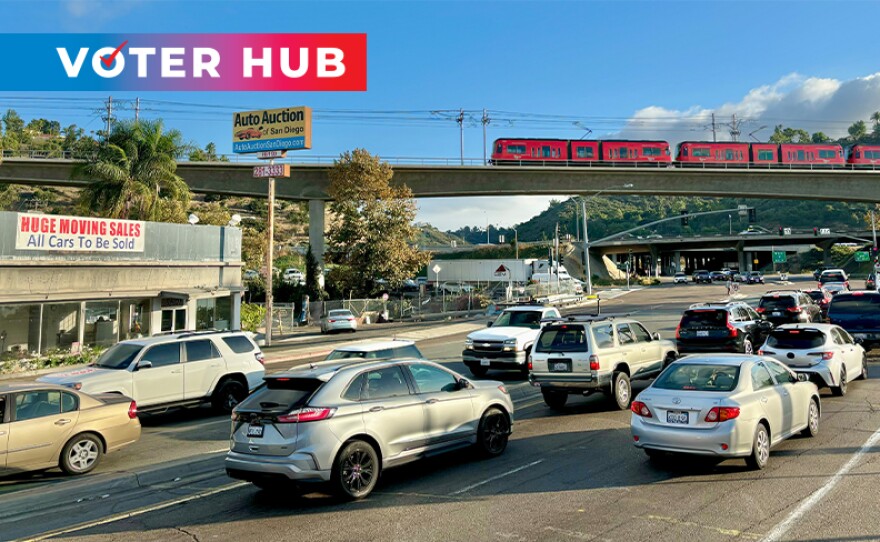Early returns show San Diego County voting "no" on Measure G.
San Diego County's public transportation system would see the biggest investment in history if a majority of voters say "yes" to Measure G, which would raise the county's sales tax rate by a half percentage point.
Measure G is a citizens initiative sponsored by a coalition of labor and environmental groups. It would raise an estimated $350 million per year, most of which would be earmarked for public transit infrastructure and services. Roughly a third of the funding would go toward highways and local streets.
Why it matters
From pothole-riddled streets to collapsing rail lines, San Diego's transportation infrastructure is in poor condition and in need of modernization. San Diego also has ambitious goals to wean the region off its addiction to cars, which are the largest local source of greenhouse gas emissions.
Measure G would provide more funding for transportation infrastructure, though specific projects and funding timelines would be up to the county's elected officials.
- A Supreme Court ruling could bring historic drop in Black representation in Congress
- Poway City Council sets June 2 as special election date for District 2 seat
- After historic shift to the right in 2024, Imperial County overwhelmingly voted 'yes' on Prop 50
- More than 10% of Congress won't return to their seats after 2026
- Court battle begins over California's new congressional map designed to favor Democrats
A closer look
Opponents of Measure G argue that raising the county's sales tax would burden struggling families with an even higher cost of living, and that the San Diego Association of Governments (SANDAG), the county transportation agency that would manage most Measure G capital projects, cannot be trusted with more taxpayer dollars. They also argue that since most San Diego County residents drive, any tax increase should give more funding to streets and highways than public transit.
Supporters argue the county needs to put up more local funding to attract more investment from the state and local governments, and that improvements to the public transit system would help the environment and low-income households that can't afford the costs of car ownership. They also argue Measure G would create local construction jobs and would help everyone in the county by investing in a wide variety of transportation infrastructure projects.
Counting the ballots
According to the County Registrar of Voters, the first returns available around 8 p.m. on election night only include mail-in ballots and vote center ballots received before Election Day.
After that, results on election night will include only the vote center ballots cast on Nov. 5. The Registrar continues to count remaining ballots and post returns until the election is certified on Dec. 5.
Here's everything you need to know about election security in San Diego County.






